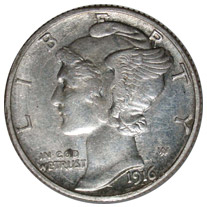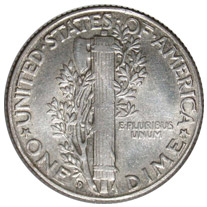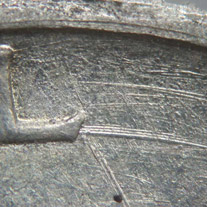Die Struck Counterfeit 1916-D Mercury Dime
Posted on 9/15/2009
It is very easy for authenticators to determine that a coin is counterfeit when it is made using a different method than the techniques used to make the authentic coin it replicates. For example, when a cast copy is made of a coin that was die struck, the signs of casting provide definitive evidence that the coin is fake. Counterfeit coins are most deceptive when they are made in the same fashion as authentic coins because they replicate the fundamental features of the coin more closely. In these cases, specific diagnostics are used to determine that they are not genuine.
Recently, a die struck copy of the key date 1916-D Mercury Dime was submitted to us. While the counterfeit was not deceptive, it illustrated one of the features that should be examined to determine authenticity on die struck counterfeits. Specifically, it showed a number of raised tooling marks on both sides of the coin that are not found on genuine examples.
Tooling marks are raised lines that appear on the surface of the coin. Usually they are the result of a counterfeiter’s efforts to remove a blemish or flaw from a die. A file or other tool creates a line or series of lines on the coin that are not part of the design. These marks frequently appear in the field area and disappear where they touch a design element.
On this fake 1916-D dime, a number of tooling marks are visible near the foot of the L in LIBERTY. The largest of these lines are a sequence of raised concentric arcs that follow the circular shape of the coin. Radial marks extending inwards are also visible. On genuine examples these areas of the field are smooth and do not show raised marks of this type.
Tooling marks are specific to the die that struck a coin, making them important tell-tale features of counterfeit coins. Knowledge of die diagnostics is usually acquired by examining countless coins over a period of many years, but specialized references that illustrate tooling marks on counterfeit coins do exist. Sometimes these features alone can’t determine authenticity, and, when it comes to key date US coinage, professional authentication is always recommended.
Stay Informed
Want news like this delivered to your inbox once a month? Subscribe to the free NGC eNewsletter today!



